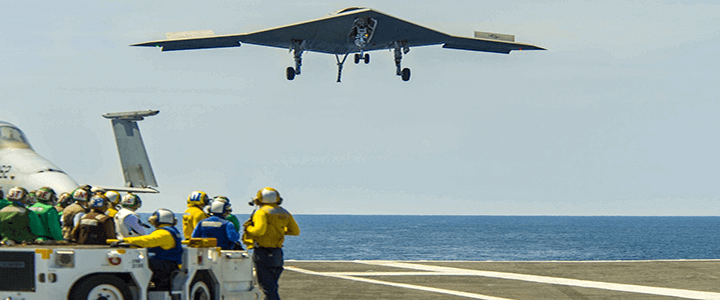Call it the revenge of the propeller.
Jet aircraft get all the attention. They’re sleek and sexy, and they break the sound barrier. There are few things as intimidating as a fighter aircraft making a high-speed, low-level pass in a show of force. But for all the love the Air Force gives its fast-movers, they leave a gap in capacity between themselves and unmanned aerial systems.
In January, when Sen. John McCain (R-Ariz.), chairman of the Senate Armed Services Committee, published “Restoring American Power,” his guidance for the development of the defense budget for the next four years, he included a call for a fleet of “light-attack fighters” to perform the close air support role in “permissive environments.” McCain argued that the Air Force could buy up to 200 of these aircraft by FY 2022.
So it came as little surprise that the SASC’s version of the National Defense Authorization Act for Fiscal Year 2018 included $1.2 billion for procurement of “a fleet of Light Attack/Observation aircraft.” The program, known as OA-X, represents a different procurement model for the Air force, buying an existing aircraft to fill a need rather than designing one from scratch.
AFFORDABLY FILLING A CAPABILITY GAP
Forget for a moment that McCain’s definition of a permissive environment and a ground-pounder’s definition are clearly different. (Why would one need close air support if the environment is permissive?) There is a valid point about using supersonic aircraft, or even the venerable A-10, in CAS missions against adversaries who lack sophisticated anti-aircraft weapons.
President George W. Bush famously said, “When I take action, I’m not going to fire a $2 million missile at a $10 empty tent and hit a camel in the butt.” Bush was stressing the fact that he would act decisively in Afghanistan. But once can also use the analogy to describe the overmatch of using an aircraft whose operation costs more than $11,500 per hour in the case of the A-10 and $44,000 per hour in the case of the F-22, to shoot at Taliban fighters carrying small arms up a mountainside.
This, combined with the fact that unmanned aircraft have a narrow field of view, makes an adequate case for procurement of a small plane to fill the niche. Enter the OA-X.
The Brazilian Air Force has used Embraer’s Tucano and A-29 Super Tucano aircraft for 20 years, first as a fighter trainer, and more recently in an operational role. Colombia used the plane extensively in its fight against the FARC insurgency, and other air forces across Central and South America and Africa have also been fielding the plane.
Embraer has partnered with SierraNevada Corporation to produce a variant of the aircraft in Jacksonville, Fla. The U.S. has been providing the nascent Afghan Air Force with A-29s since last year.
TESTING AND EVALUATION, BUT NO COMMITMENT
Next month, the Air Force will put the A-29 and two competitors from Textron, the AT-6 Wolverine, also a turboprop, and the Scorpion jet, though testing and evaluation at Holloman Air Force Base in New Mexico.
But while the Air Force Chief of Staff, Gen. David Goldfein, called the OA-X a “great idea” in a discussion at the American Enterprise Institute in January, newly installed Air Force Secretary Heather Wilson remains non-committal. Wilson, herself a former Air Force officer, told the Air Force Association that OA-X “is not a procurement, it’s an experiment.”
She has not changed her stance, at least publicly, since the SASC published its NDAA summary last week.
$1.2 billion is a fair amount of money at any time, but particularly at a time when the nation seeks to balance the need for military modernization with a public appetite for cost-cutting. With Republicans in charge of the executive branch and both houses of Congress, the public deserves more clarity than the authorities have given.
The OA-X program has merit and fills an identified gap. For all the complaints about how budget uncertainty hinders readiness, the public deserves a decision over whether this project will transition from an experiment to a procurement before the end of the fiscal year.
$1.2 billion can pay for plenty of other things.


